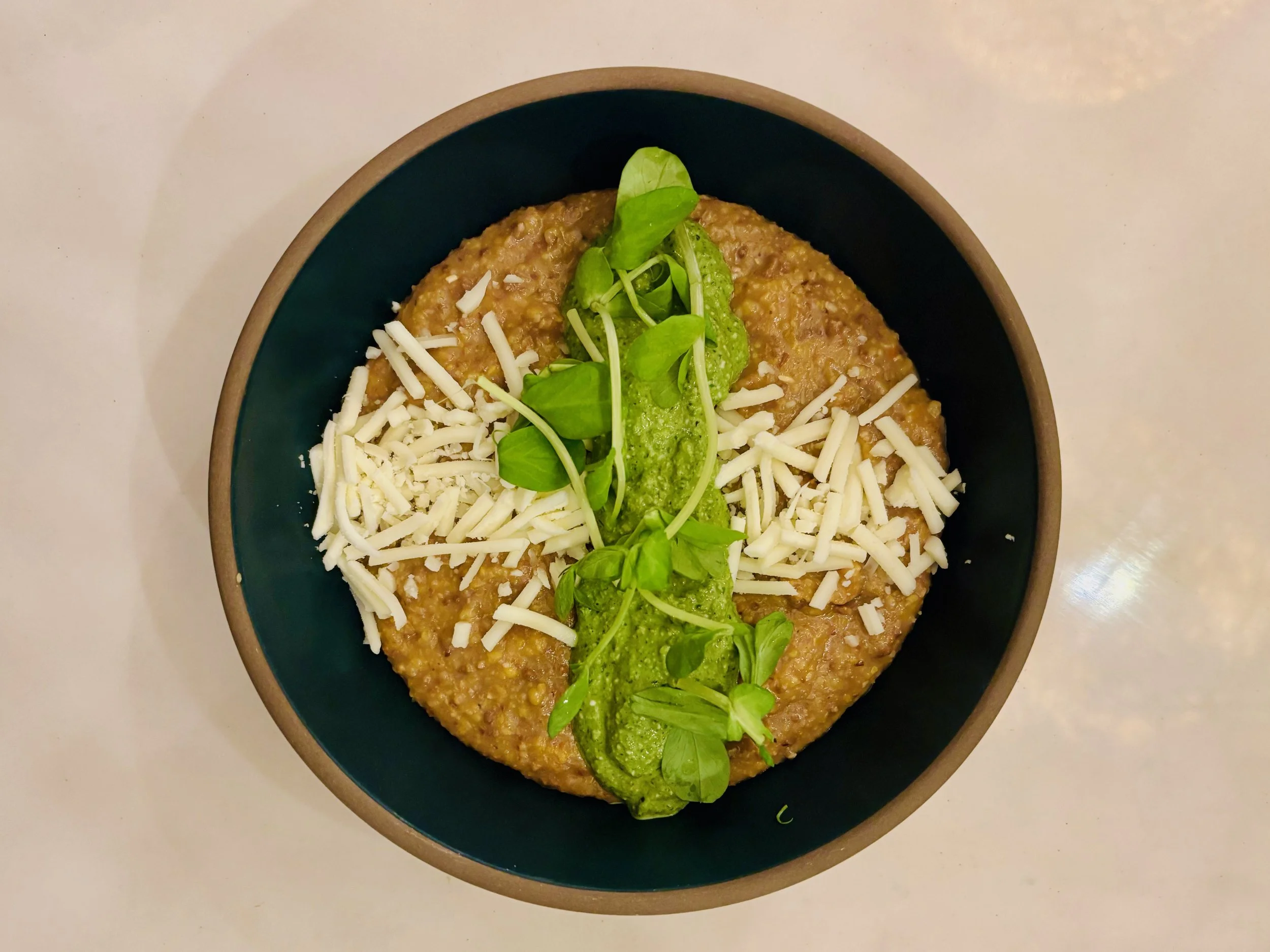Acorn Polenta
By Jed Wheeler of Manzanita Cooperative
It’s easy to look at modern world cuisines and forget where the ingredients come from. What would Italian cuisine be without tomatos, peppers, or maize (corn) that were all domesticated by Indigenous people’s in the Americas? It’s just as easy to to miss the ingredients that aren’t there any more - we know from the historical record that Italians have been eating acorn since before Rome, but outside of Sardinia there’s precious little living tradition. Fortunately, that is now changing and acorn is seeing a well-deserved revival. Prior to the introduction of maize from the Americas, polenta was often cooked with acorn - and it is truly delicious. When I let my 6 year old son pick any dish he wanted for his birthday dinner, this is what he requested.
The following is the recipe as I normally prepare it to make a fried polenta. If I’m doing creamy polenta, I use a full cup of Acorn, leave out the maize, and add a little more liquid, butter, and cheese. For a fried polenta, I generally mix corn and acorn because the corn helps it congeal a bit better. In either case, the flavor is richer and nuttier than a polenta made from just corn - not to mention significantly healthier.
Ingredients:
3/4 cup cold-leached rough-ground acorn meal (not flour!)
1/4 cup corn polenta
4 cups stock
butter and salt to taste
A flavorful cheese of your choosing. Parmigiano-Reggiano works well but there are lots of good choices. Generally use somewhere between 1/4 cup and 1 cup, depending on the cheese.
(optional) 2 tablespoons of nutritional yeast
You’ll also want parchment paper or aluminum foil on-hand if you intend to serve it as a crispy fried polenta instead of as a creamy polenta.
Process:
Bring the stock to boil. If you’re using the nutritional yeast, whisk it in now. It adds B vitamins and umami to the stock but isn’t for everyone. Depending on how salty your stock is, you may want to add salt here since it’s much easier to mix evenly at this stage.
Add in corn polenta and acorn meal, stirring thoroughly to make sure there are no lumps. It’s important the acorn be cold-leached because hot leaching cooks the starch even if you manage to retrieve it, and you need that starch to cook as part of this dish to help the polenta congeal.
Stir continuously until the mixture comes back to a boil and then reduce heat to a low simmer. Continue to stir every couple minutes until it thickens to the point where it’s not easily stirred any more; being careful not to let it scorch on the bottom of the pan. This takes around 40 minutes. I usually use this time to chop veggies or cook down a sauce in a separate pot during this process so I don’t get bored and accidentally scorch it.
Turn off heat and stir in butter, cheese, and salt - in that order - tasting as you go. If you’re serving it as a creamy polenta, plate it now and enjoy. If you’re doing crispy polenta, continue on.
Spoon the mixture onto the parchment paper or foil, wrapping it and twisting the end to form tubes. Let it set in the fridge until it is cool and firm - rushing this step will see your polenta disintegrate in the pan.
Unwrap the now-solid polenta and slice it into discs around 1/2 inch thick. Prepare a frying pan with butter. Use more than you think you need. Add the slices and fry until golden-brown and crispy before flipping and browning the other side.
Plate and serve. They’re delicious as-is, with cheese, garnished with fresh tomatoes or sautéed mushrooms; or any way you might serve polenta traditionally.
Add some homemade pesto and cheese, and you’re getting a restaurant-worthy meal in your own kitchen.

